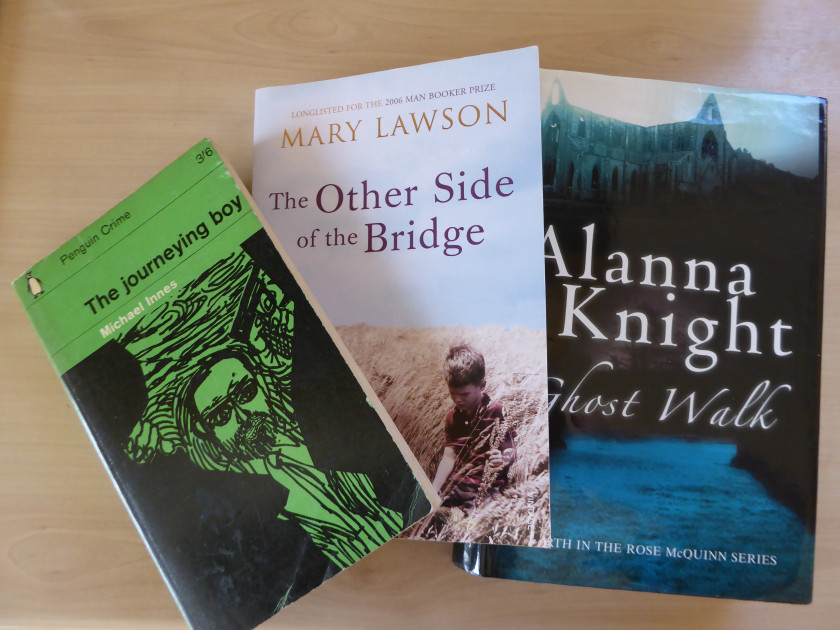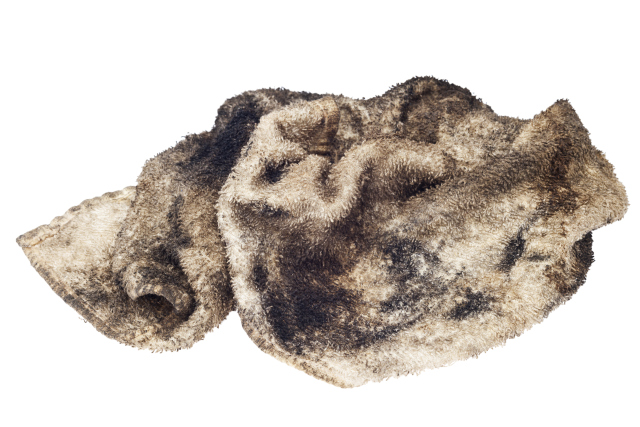I’m now up to J, K, and L in my A – Z of TBRs, a series of posts in which I take a fresh look at some of my TBRs to inspire me to read more of them by the end of the year, or maybe to decide not to bother reading them after all. These TBRs are all physical books – I’ve not included e-books. Previously I’ve just chosen books for these posts by using the titles, but this time I’ve also chosen books by using the authors’ last names.
I’m enjoying searching my shelves – finding books I’d forgotten were there (the disadvantage of shelving books behind others).

J – is for The Journeying Boy by Michael Innes, a book I’ve had for three years. This is a green Vintage Penguin, first published in 1949, and in this edition in 1961. Humphrey Paxton, the son of one of Britain’s leading atomic boffins, has taken to carrying a shotgun to ‘shoot plotters and blackmailers and spies’. His new tutor, the plodding Mr Thewless, suggests that Humphrey might be overdoing it somewhat. But when a man is found shot dead at a cinema, Mr Thewless is plunged into a nightmare world of lies, kidnapping and murder – and grave matters of national security.
I’m not sure now that I do want to read this book. It looks quite daunting, with lots of description and literary allusions as shown in this extract – the cinema goers had been watching a film, Plutonium Blonde:
Another squalid crime … Circumstances had made Inspector Cadover a philosopher, and because he was a philosopher he was now depressed. This was the celebrated atom film. This was the manner in which his species chose to take its new command of natural law. Fifty thousand people had died at Hiroshima , and at Bikini ironclads had been tossed in challenge to those other disintegrating nuclei of the sun. The blood-red tide was loosed. And here it was turned to hog wash at five shillings the trough, and entertainment tax five shillings extra. That some wretched Londoner had met a violent death while taking his fill seemed a very unimportant circumstance. To track down the murderer – if murderer there was – appeared a revoltingly useless task. Mere anarchy was loosed upon the world – so what the hell did it matter? (page 51)
K – is for Ghost Walk by Alanna Knight (on my TBR shelves for four years), the fourth in the Rose McQuinn series. This is historical crime fiction set in 1897 in Edinburgh three years after Rose McQuinn’s husband, Danny, disappeared in Arizona. Believing him to be dead, she returned to Scotland to start her life afresh. Now a ‘Lady Investigator, Discretion Guaranteed‘, she is about to marry her lover, Detective Inspector Jack Macmerry of the Edinburgh Police when a nun from the local convent claims to have received a letter from Danny, and after two suspicious deaths, it seems that a ghost is about to walk back into her life…
I’ve read and liked the first book in this series, The Inspector’s Daughter, and am hoping it won’t matter that I’ve not read the second and the third books.
I had no idea what were the views of Edinburgh City Police on the subject of female detectives or the milder term ‘lady investigators’, but I could guess that that they regarded criminal investigation as a ‘men only’ province.
I felt so impatient with authority. Would a day ever dawn when women ceased to be regarded as playthings or breeding machines, when they would be given equal rights with men. My hackles rose in anger at the suffragettes’ gallant struggles as portrayed in a recent pamphlet which I had been at pains to keep concealed from Jack. (page 34)
L – is for The Other Side of the Bridge by Mary Lawson, a book I’ve had for 10 years! I was so keen to read it when I first bought it after loving her first novel, Crow Lake. It’s about two brothers, Arthur and Jake. Arthur is older, shy, dutiful, and set to inherit his father’s farm. Jake is younger and reckless, a dangerous man to know. When Laura arrives in their 1930s rural community, an already uneasy relationship is driven to breaking point…
Arthur’s earliest memory was of standing in the doorway of his parents’ room, looking at his mother as she lay in bed. It was the middle of the day but nonetheless she was in bed, and Arthur didn’t know what to make of it. The bed was very large and high and Arthur could only just see her. She had her face turned towards the window. Then Arthur’s father called from the bottom of the stairs that the doctor was coming, and she turned her head, and Arthur saw that she was crying. (page 25)
What do you think? Do you fancy any of them? Would you ditch any of them?
Share this:




